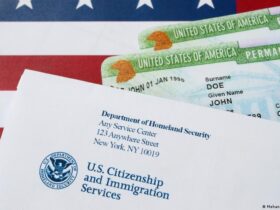China has announced a series of measures against Japan as the two countries remain in a tense standoff over Taiwan, a self-ruled island that Beijing views as a Chinese province.
The dispute began on November 7, when Japanese Prime Minister Sanae Takachi said that a Chinese military attack on Taiwan could pose an “existential threat” to Japan, which would potentially allow Tokyo to exercise its legal right of collective self-defense.
Beijing was incensed by the comment and lodged an official protest. However, the bigger issue came in the form of an online post by Xue Jian, China’s Consul General in Osaka, Japan, criticizing Takaichi’s comments, saying it was “a path to death that only a few idiot politicians in Japan would choose.”
In what could be seen as a threat to the Japanese Prime Minister, the Chinese diplomat said that “we just need to cut off their dirty heads.” The post has since been removed.
In turn, Tokyo called Xue Jian’s remarks “grossly inappropriate” and several Japanese politicians called for Xue’s expulsion.
Relations remain tense after Japan sent a Foreign Ministry official to China earlier this week in an apparent effort to defuse the dispute.
China asks citizens to avoid traveling to Japan
Amid rising tensions, Beijing warned that Tokyo would face a “devastating” military defeat if it intervened in the Taiwan conflict and expressed “grave concerns” about Japan’s security situation.
China also began an eight-day live-fire drill in the Yellow Sea this week. Meanwhile, Chinese coast guard ships continued patrolling around the disputed Diaoyu Islands, known as the Senkaku Islands in Japan.
On Wednesday, China informed Japan that it would suspend imports of Japanese seafood, and Chinese officials urged citizens not to travel to or study in Japan. Tokyo officials, in turn, advised their citizens in China to remain vigilant.
William Yang, senior Northeast Asia analyst at the International Crisis Group think tank, told DW that Japanese Prime Minister Takachi was “probably surprised to some extent” that comments he made in parliament would draw such a strongly coordinated response from Beijing.
But most of the tools used by Beijing in the current dispute, such as pressuring Japanese tourism and increasing naval patrols, “are not new,” he said.
“I don’t see this response as an overreaction at any level — it’s a calibrated, familiar push,” Yang told DW.
Anger is being vented in China
Meanwhile, posts supporting the government’s strong retaliatory measures against Japan flooded Weibo, China’s leading microblogging platform.
Experts say this indicates that China’s strong responses may also be aimed at stoking patriotic public sentiment and creating an image of national unity at home.
“This episode, in a way, also serves to ease some of the domestic tensions that have arisen amid the economic slowdown (in China),” Lim Chuan-Tiong, a research fellow in Asia studies at the University of Tokyo, told DW.
How far will the increase go?
While Taiwan remains one of the most sensitive issues for China, Lim points out that this is the first time that the dispute over the island has come “to the forefront” of China-Japan relations.
Fukuda Madoka, a professor at the Faculty of Law at Hosei University in Japan, told DW that China’s primary objective is to prevent the Takachi government “from actively interfering in Taiwan’s affairs in the future.”
But Lim said that, based on historical experience, differences between China and Japan eventually diminish.
“Beijing aims to teach Japan a lesson, but ultimately it will back down and return to negotiations,” he told DW. “It cannot avoid forever engaging with a neighboring country.”
Looking ahead, Lim said the trajectory of the relationship is unlikely to be mediated by the United States or any other third party.
“In the short term, Japan will need to take clear steps to calm things down, because it is clear that Beijing is maintaining a state of constant tension,” Yang told DW.
But he said Japan’s Takaichi would find himself in a dilemma, because making concessions too easily could weaken his long-term political position at home.
How did Taipei respond?
Amid a heated exchange of words between Beijing and Tokyo, Taiwan President Lai Ching-te on Monday said China’s “multi-pronged attack” on Japan has dealt a serious blow to peace and stability in the Indo-Pacific region.
He urged the international community to remain vigilant and called on China to exercise restraint and “demonstrate conduct befitting a major power” rather than becoming a “troublemaker” in the region.
But analysts say that it would be better for Taiwan to maintain distance from tension.
Lim, the University of Tokyo researcher, said it was “not the right time” for Taiwan to step into the dispute and that a low-key approach was needed to avoid further escalation.
Professor Fukuda of Hosei University expressed the same view.
“China is wary that Japan is supporting Taiwan independence,” he said. He said Beijing would become more sensitive to Japan-Taiwan relations.
“If the Taiwanese government wants to take a strategic approach, it should still sit in response to China-Japan tensions,” Fukuda said.
DW correspondent Chung-Lan Cheng based in Japan contributed to the article.
Edited by: Darko Janjevic






Leave a Reply